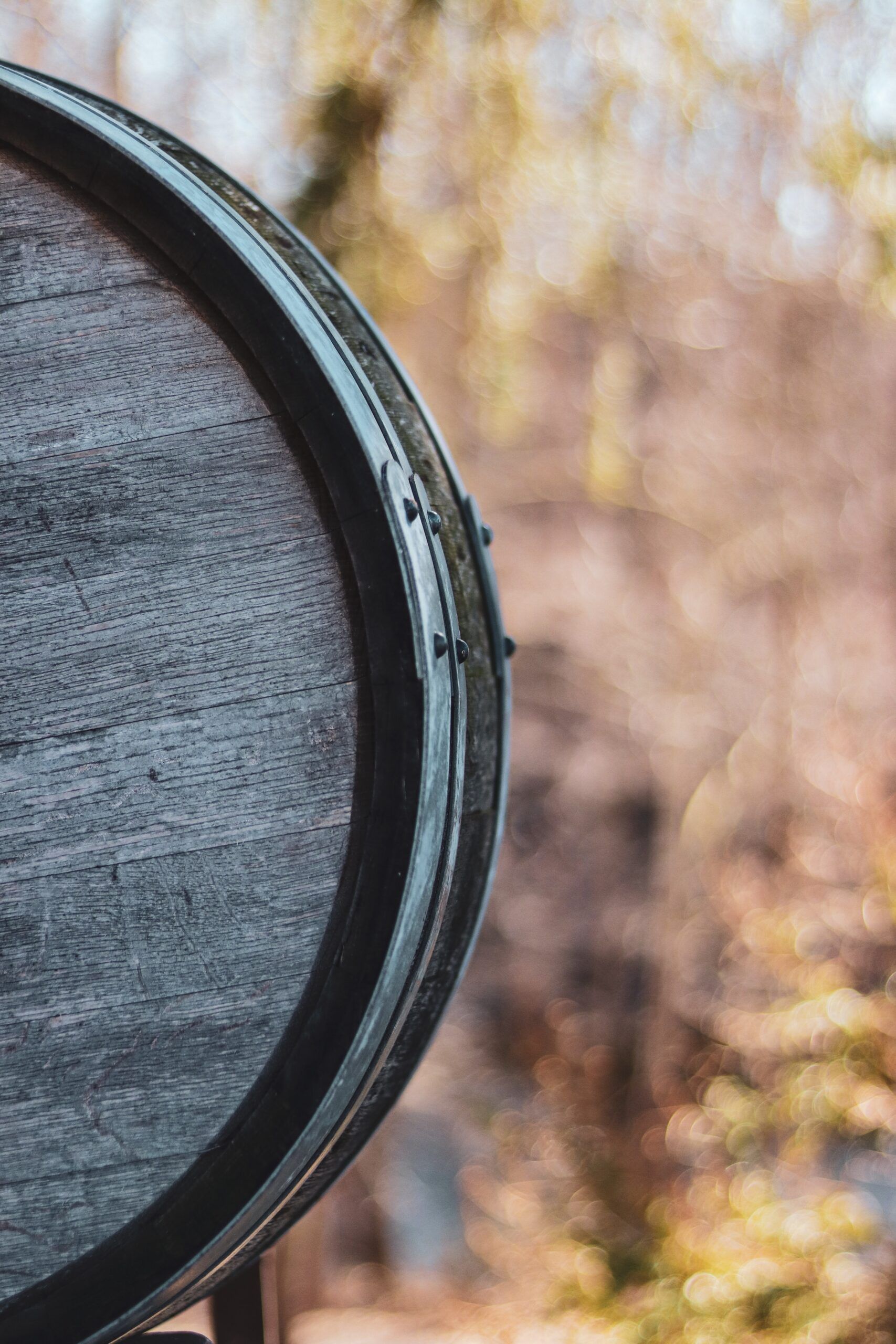
Types of wine barrels: characteristics and capacities
Wine barrels are much more important than you might think to the final flavour of a wine. They are where it gets its characteristic aromas and flavours. By the way, did you know they were originally only used to transport wine? This is how, over time, people discovered that the wooden barrels imparted many nuances on the liquid inside, greatly improving its taste in some cases.
We’re going to do an in-depth analysis of the different types of wine barrels, their capacity and the time a wine has to spend in them to be considered a Crianza, Reserva or Gran Reserva. Here we go!

Oak barrels: American, French and Spanish
Did you know that DOCa Rioja wines are aged in oak barrels? We’re going to look at the various types of oak we find, their characteristics and what they impart on the wine.
American oak
When we talk about American-oak barrels (Quercus Albar), we’re talking about a hard, strong yet permeable barrel. This type of barrel gives wines stronger, “sweeter” notes, which can include coffee, cocoa, coconut or vanilla. We can even sometimes find touches of black pepper or cloves. American-oak barrels tend to impart fewer tannins than other types. Our Coto de Imaz Reserva spends at least 18 months in American-oak barrels.
French oak
Another type of wine barrel is made of French oak (Quercus Petrea). It is softer than the previous type and known for the balanced aromas gives the wine, with more balsamic notes, plus honey or nuts, as the predominant ones. Oxygenation in these barrels happens more slowly than in American-oak barrels, and they give the wine more tannins.
Coto de Imaz Reserva Blanco spends 12 months in new steam-bent French-oak barrels (and the lees are stirred periodically (battonage) to maintain this wine’s characteristic fruitiness while also promoting its complexity, unctuousness and longevity.
Spanish oak
Less well-known than the other two types of wine barrels, since Spanish oak (Quercus Petrea or Quercus Pyrenaica) used in winemaking is quite scarce. It is similar to French oak thanks to the region where it grows, and it has great aromatic qualities, imparting mature, tantalising, enveloping notes.
Acacia, cherry or pine barrels
Less well-known, but with great characteristics: let’s look at three other types of barrels for making different types of wine.
Acacia
There are different types of acacia barrels, depending on how much they have been toasted: medium-toasted barrels are used for ageing red or white wines, while untoasted acacia barrels are used only for white wines.
Cherry
Like with acacia, in cherry there are two types of barrels (medium-toasted and untoasted), although both can be used for white or red wines. The main difference is the aromas: if the barrel has been toasted, the wine will have fruit aromas, but with a characteristic “toasty” touch that will completely mark the wine. If it is untoasted, we get aromas of red fruit, including cherries.
Pine
Finally, this type of wood is found in barrels used for winemaking in the Canary Islands. Wines aged in this type of barrel are known as “vinos al tea” and they have some aromas reminiscent of pine sap.


Different barrel capacities
According to the DOCa Rioja Regulatory Board, Rioja wines are aged in 225-litre barrels (known as Bordeaux barrels), racked periodically, and then finished in the bottle. Did you know La Rioja is considered to have the largest inventory of barrels in the world, with over 1,300,000?
For storing wine, we also have foudres: large casks (200 - 300 hectolitres) that are laid horizontally, with a round or cylindrical base, as you can see in the picture.
Barrel time for wines
What does the DOCa Rioja Regulatory Board say about how long wine has to be aged in the barrel to be a Crianza, Reserva or Gran Reserva?
Barrel ageing for Crianza wines
Wines can be considered a Crianza in at least their third year. For a red wine to be a Crianza, it has to have spent at least 12 months in the barrel. For white and rosé wines, the minimum barrel-ageing is six months. The first day of barrel-ageing counted for wines can never be before 1 December of the year the grapes were harvested. This is the day it starts for El Coto Crianza!
Barrel ageing for Reserva wines
- Red wines: Aged on oak and in the bottle for a total of at least 36 months, with at least 12 in oak barrels.
- White and rosé wines: Aged on oak and in the bottle for a total of at least 24 months, with at least 6 in oak barrels.
Barrel ageing for Gran Reserva wines
- Red wines: Aged on oak for at least 24 months, followed and complemented by at least 36 months ageing in the bottle. Have you tried Coto de Imaz Gran Reserva?
- White and rosé wines: Aged on oak and in the bottle for a total of at least 48 months, with at least 6 in oak barrels.
We recommend you don’t stop learning about wine, with these fascinating articles:

















